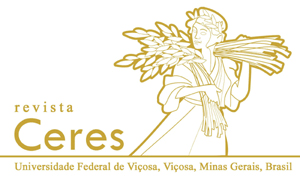ABSTRACT
Intercropping is a method of growing plants that assists in rational use of natural resources. Based on this concept, the aim of this study was to evaluate the response of collard green and radish ‘Cometo’ crops in monoculture and in intercropping under different spatial arrangements through physical production indicators (technical coefficients). The study was conducted in plant beds in a randomized block design (RBD) with 5 treatments and 4 replications. The treatments involved growing the two crops separately and intercropped under different spatial arrangements: (1:2) one row of radish ‘Cometo’ between two rows of collard green; (2:2) two rows of radish ‘Cometo’ between two rows of collard green; and (3:2) three rows of radish ‘Cometo’ between two rows of collard green. The spatial arrangements adopted did not affect the growth and development of radish ‘Cometo’ and of collard green, and all the arrangements used exhibited high land use efficiency, especially the 3:2 arrangement, which provided the greatest land use efficiency, at 1.69.
Keywords:
Raphanus sativus; Brassica oleracea L. var. acephala; photosynthetic rate; land equivalent ratio.
